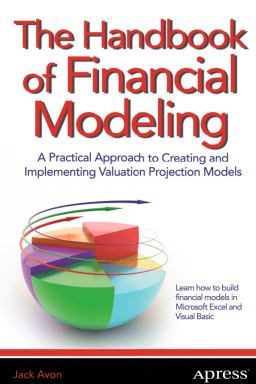The Handbook of Financial Modeling
The step by step guide into running financial modeling projects and deliver a financial model
Description
Financial models are developed predominantly in Microsoft Excel and as a result tend to conform to the Microsoft office user experience. So why should there be such a disparity in people’s views of models?
Part of the problem is that it is not that easy to describe a model. Sure, it’s possible to describe theoretical models and what they should like, but an actual working model is a completely different game altogether. The real reason models are generally difficult to understand is because modeling is about building a representation of a business, project, or even a process and creating scenarios and sensitivities of possible outcomes that could arise when certain variables are manipulated. There are a couple of distinct types of businesses, each type with unusual challenges, and each challenge may be a project, and each project may have many different processes. As a result, no two models will ever be same. Over the years, I have found that the best way to describe a financial model is to describe the physical business or project because that is what the model will represent. It has been becoming increasingly evident in recent years that the demands and therefore the requirements of the financial modeler have been greatly expanded from the typical spreadsheet jockeys of yesteryear.
The playing field has changed, and modelers are now seasoned professionals in their own right and come from areas such as accounting, engineering, and legal.
Financial models are developed predominantly in Microsoft Excel and as a result tend to conform to the Microsoft office user experience. So why should there be such a disparity in people’s views of models?
Part of the problem is that it is not that easy to describe a model. Sure, it’s possible to describe theoretical models and what they should like, but an actual working model is a completely different game altogether. The real reason models are generally difficult to understand is because modeling is about building a representation of a business, project, or even a process and creating scenarios and sensitivities of possible outcomes that could arise when certain variables are manipulated. There are a couple of distinct types of businesses, each type with unusual challenges, and each challenge may be a project, and each project may have many different processes. As a result, no two models will ever be same. Over the years, I have found that the best way to describe a financial model is to describe the physical business or project because that is what the model will represent. It has been becoming increasingly evident in recent years that the demands and therefore the requirements of the financial modeler have been greatly expanded from the typical spreadsheet jockeys of yesteryear.
The playing field has changed, and modelers are now seasoned professionals in their own right and come from areas such as accounting, engineering, and legal.
This Best Practice includes
I PDF Book










